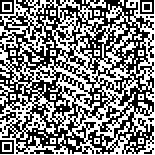闫国平,臧大维,李欣慧,王小霞,彭静静.接触性热痛诱发电位在偏头痛患者三叉神经感觉传导评定中的应用[J].中华物理医学与康复杂志,2016,38(3):213-216
扫码阅读全文

|
| 接触性热痛诱发电位在偏头痛患者三叉神经感觉传导评定中的应用 |
|
| |
| DOI: |
| 中文关键词: 接触性热痛诱发电位 先兆偏头痛 三叉神经 |
| 英文关键词: Pain Heat-evoked potentials Migraine Aura Trigeminal nerves |
| 基金项目: |
|
| 摘要点击次数: 2615 |
| 全文下载次数: 3573 |
| 中文摘要: |
| 目的采用接触性热痛诱发电位(CHEP)检查先兆偏头痛患者头痛发作期间三叉神经小纤维功能,探讨CHEP在偏头痛患者三叉神经感觉传导评定中的价值。 方法共选取先兆偏头痛急性发作期患者60例,同时选取60例体检健康者纳入正常对照组。分别对上述对象左、右侧眉弓上方前额部位进行CHEP检测,热痛刺激温度设定为51℃,记录其CHEP波形、潜伏期及波幅;同时嘱受试者采用视觉模拟评分法(VAS)于每次热痛刺激3~5s后口头对刺激强度进行评分。 结果热痛刺激正常对照组右侧眉弓上方前额时,其CHEP-N波、P波潜伏期、N-P波幅分别为(348.56±14.52)ms,(490.29±23.11)ms和(50.36±6.15)μV,与刺激左侧前额所得数据[分别为(348.68±14.55)ms,(490.37±23.15)ms和(50.27±6.12μV)]间差异无统计学意义(P>0.05);热痛刺激偏头痛组头痛侧眉弓上方前额时,其N波、P波潜伏期、N-P波幅分别为(307.78±11.75)ms,(476.72±20.12)ms和(71.90±7.23)μV,与刺激非头痛侧前额所得数据[分别为(308.02±11.77)ms,(477.37±20.18)ms和(72.03±7.31μV)]间差异无统计学意义(P>0.05)。通过进一步组间比较发现,偏头痛组N波潜伏期[(307.89±11.76)ms]、P波潜伏期[(476.81±20.16)ms]均较正常对照组[分别为(348.62±14.53)ms,(490.33±23.12)ms]显著缩短(P<0.05),N-P波幅[(71.96±7.28)μV]均较正常对照组[(50.32±6.13)μV]明显增大(P<0.01)。热痛刺激偏头痛患者头痛侧及非头痛侧眉弓上方前额时,其疼痛VAS评分分别为(7.03±0.68)分和(6.89±0.63)分,其间差异无统计学意义(P>0.05),但均显著高于正常对照组相应VAS评分(P<0.05)。 结论CHEP是一种检查三叉神经小纤维感觉径路病变的可靠电生理方法,通过CHEP检查发现,先兆偏头痛患者在头痛急性发作期其三叉神经小纤维感觉径路兴奋性增高,眉弓上方前额皮肤存在痛觉过敏现象。 |
| 英文摘要: |
| Objective To study any functional changes in the trigeminal nociceptive system in cases of migraine with aura (MWA) using painful heat-evoked potentials (CHEPs), and to explore the value of CHEP in evaluating the trigeminal small nerve fibers of patients with MWA. MethodsSixty patients with MWA were recruited as the MWA group, and 60 healthy persons were selected as a normal control group. Thermal stimulation at 51 ℃ was applied to the skin above the patients′ right and left eyebrows. The N wave latencies and N-P amplitudes of the CHEPs were recorded at the vertex (Cz) of the head. The intensity of the stimulus was graded using a visual analogue scale (VAS). ResultsIn the control group the simulation produced no significant differences in the N550 or P750 latencies or in the N-P amplitudes. In the MWA group no significant differences were observed when the headache side was stimulated, but the N550 and P750 latencies were both significantly shorter than those of the control group and the N-P amplitude was significantly greater than that of the control group. The average VAS score on both sides in the patients with migraine was significantly higher than those of the control group. However, there was no significant difference in average VAS scores between the headache and non-headache sides of the patients with migraine. ConclusionsCHEP is a reliable method for detecting any pathological changes in the trigeminal small nerve sensory pathway. Increased cutaneous allodynia in acute migraine attacks is detectable using CHEPs. |
|
查看全文
查看/发表评论 下载PDF阅读器 |
| 关闭 |